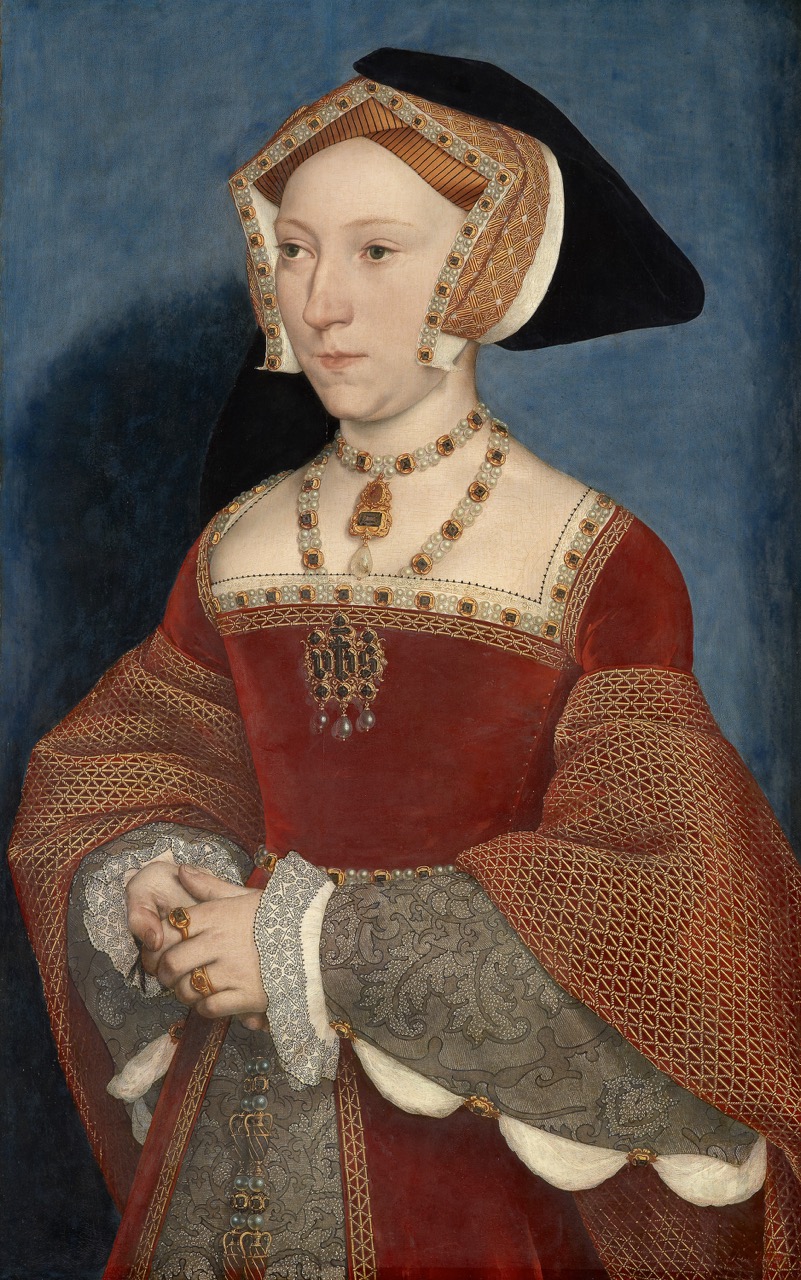Next Generation

Hans Holbein the Younger’s first models
Burgkmair painted this portrait of an unknown young man in 1506. In comparison to his earlier portraits, the pictorial scope is extended, and he shows the subject in an upright but nevertheless relaxed pose. The depiction reveals an intensive emotional observation of the subject and makes a reflective, almost melancholic impression.
In the portrait of this unknown young man, Burgkmair left us a masterly example of psychological characterization. Later, Hans Holbein the Younger would achieve great success by developing both Burgkmair’s innovations and also his father’s artistry as a portraitist.
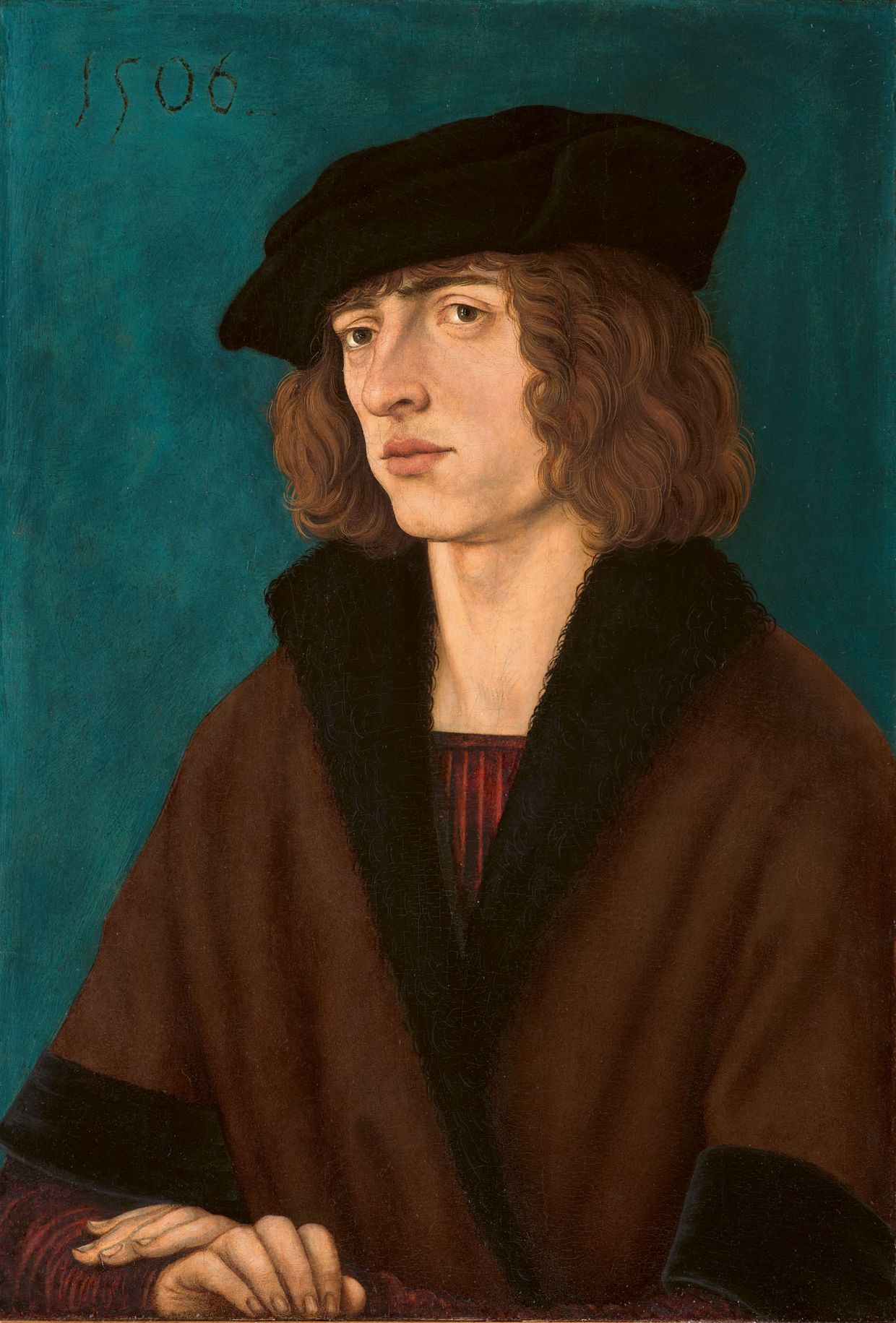
Hans Burgkmair the Elder, Portrait of a Young Man, 1506
Like father, like son
Hans Holbein the Younger followed these models, becoming one of the most important portrait painters of the Renaissance.

Here attributed to Hans Holbein the Younger, Portrait of Marx (?) Fischer, 1512
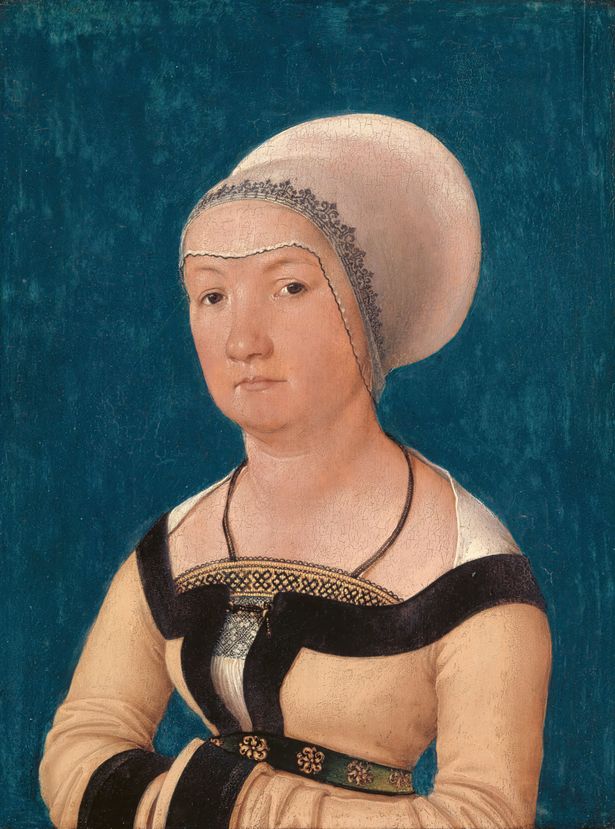
Here attributed to Ambrosius Holbein, Portrait of the Wife of Marx (?) Fischer, 1512
The portrait of the man, whose name was most likely Marx Fischer, resurfaced only a short time ago.
The carnation in the man’s hand suggests that the two portraits were occasioned by the couple’s marriage. The portraits were painted by Holbein the Elder’s sons Ambrosius and Hans. The father, the head of the workshop, received the commission and made drawings of the subjects but he had Hans paint the portrait of the man and Ambrosius the likeness of the woman.
The resurfacing of the portrait of the man from 1512 means that we have rediscovered the earliest work of Hans Holbein the Younger. So far this is his only work known to have been made in Augsburg.
This is a new and surprising discovery.
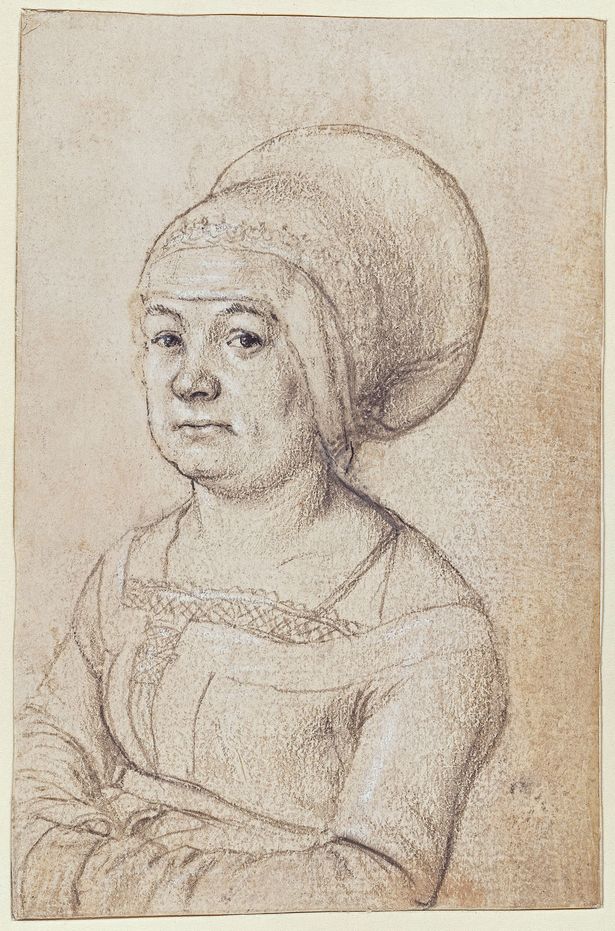
Hans Holbein the Elder, Portrait of the Wife of Marx (?) Fischer, c.1512

Hans Burgkmair the Elder, Portrait of the Wife of Marx (?) Fischer, After 1512
Two drawings show the same woman wearing identical clothes. However, the two pieces came from different hands. It seems likely that Hans Burgkmair made the second drawing, as he occasionally copied drawings by his Augsburg colleagues for study purposes. Interestingly, he changed the subject’s facial expression, giving her a look of defiance.
Incidentally, drawings of a subject made at a sitting are generally truer to life, whereas painted portraits usually make a more dignified and distanced impression.
The painter must have treated the woman to a dose of artistic rejuvenation therapy: her face is firmer and more slender and in general she seems younger than in the drawing. Even long before the age of the selfie, portraits often reveal to us how the subjects wished themselves to be seen.

In their father’s workshop, Hans Holbein the Younger and his somewhat older brother Ambrosius received a training in the technical skills of painting, and also familiarized themselves with their father’s models, fifteenth-century Netherlandish painting and contemporary German painting.
The art of Hans Burgkmair with its fundamental orientation towards Italian Renaissance painting must have been a frequent topic of discussion in the workshop of Holbein the Elder. It was precisely this mix of different circles of models that shaped the early works of the two Holbein brothers when they arrived in Basel in 1515 at the start of their journeyman years.
A short time later there are no further historical records of Ambrosius, who may have died young. Hans the Younger, in contrast, established himself very successfully in Basel. Early Netherlandish and Italian influences, above all that of Leonardo da Vinci, led to a highly distinctive and independent artistic development that would leave a lasting imprint on his oeuvre.
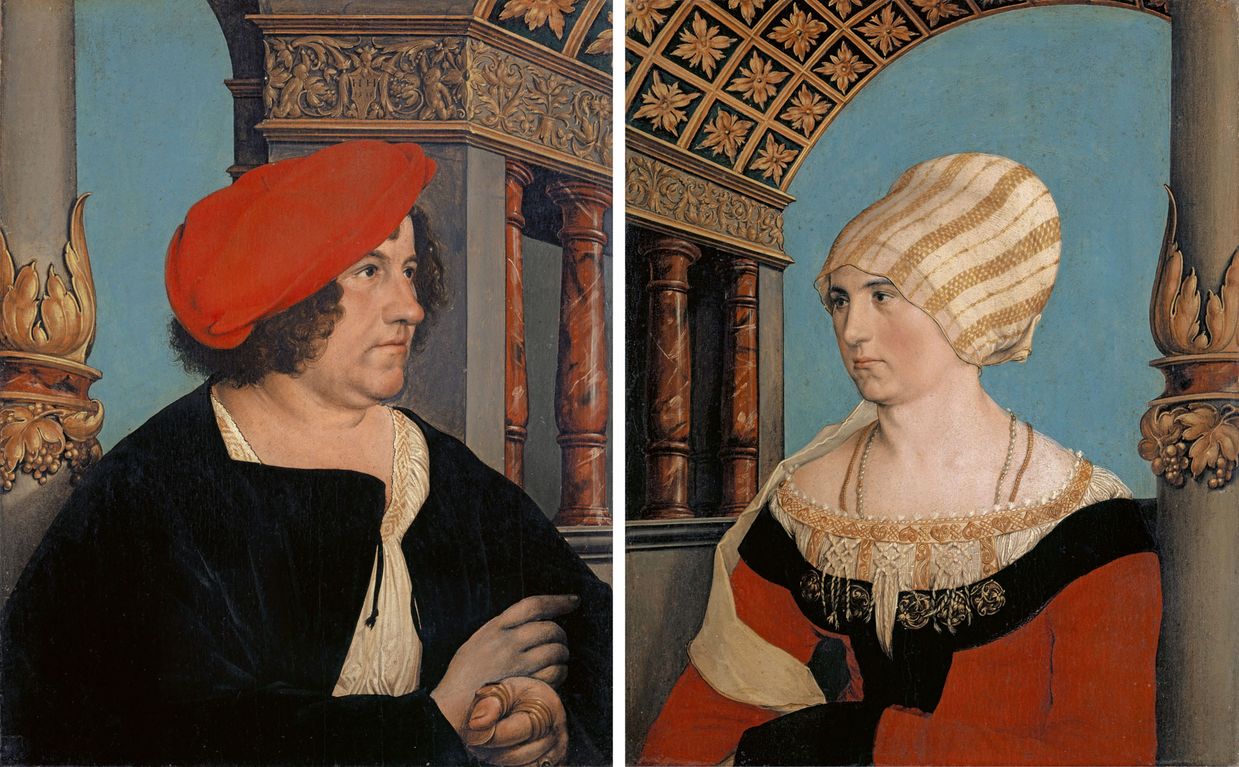
Hans Holbein the Younger, Paired portraits of Jacob Meyer zum Hasen and his wife Dorothea Kannengießer, 1516
The paired portraits were prompted Jacob Meyer’s election as mayor of Basel.
Meyer wears numerous rings on his left hand and holds a coin that indicates the source of his wealth: he was a money changer. He looks to the right towards a productive future. His second wife looks at him. Meyer points with his extended index finger to his spouse.
Holbein’s accomplishment here did not lie in making a portrait of a marriage but in finding a way of conveying the subjects’ special status. To do so, he made effective use of the latest fashion: Italian architecture. It seems likely that in this regard Burgkmair’s work provided the young Holbein with inspiration.
Hans Holbein the Younger
Born in Augsburg, Hans Holbein the Younger left his father’s workshop in 1515 and moved to Basel. He was very soon in great demand as a painter of portraits of the Swiss city’s urban elite. In 1536, following sojourns in France and England, Holbein was appointed court painter to King Henry VIII.
| Born | 1497/98, Augsburg, Germany |
| Died | 1543, London, England |
| Children | Philipp, Katharina, Johannes, Küngold |
| Partner | Elsbeth Binzenstock |
| Parents | Hans Holbein the Elder, ? |

Joachim von Sandrart, Teutsche Academie der Bau-, Bild- und Mahlerey-Künste, i, Part 2, Nuremberg (J.-Ph. Miltenberger), 1675

Last stop London
His sensational paintings quickly led to Hans Holbein the Younger becoming Basel’s favourite painter. His career was to culminate in England from 1532 onwards.As court artist to Henry VIII, he became of the most important portrait painters of the Renaissance in northern Europe.
This portrait was one of his many commissions. It shows Jane Seymour, the king’s third wife.
The objective approach to the subject is characteristic of Holbein. In painting the splendid clothing he pays great attention to detail. Through his unerring feeling for form he succeeded in producing an exceptionally strong work. The intertwined hands alone are an unsurpassed masterpiece.
Despite his feeling for the monumental Holbein never neglected small forms. He was able to depict his subjects’ features precisely and achieve an absolutely true likeness in his portraits, in which however individual personality always had to be subject to the overall concept.
